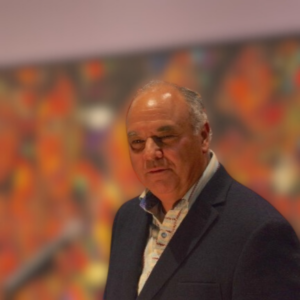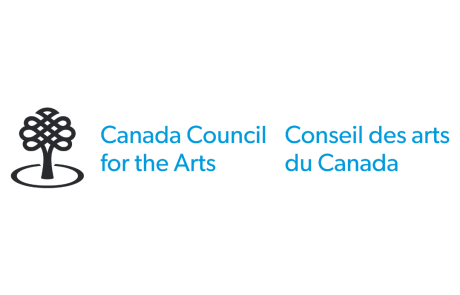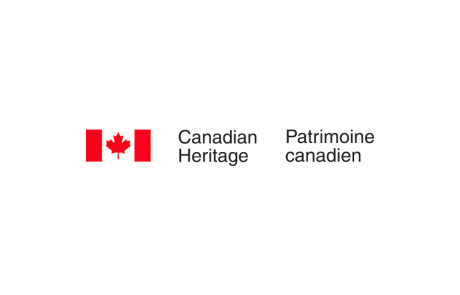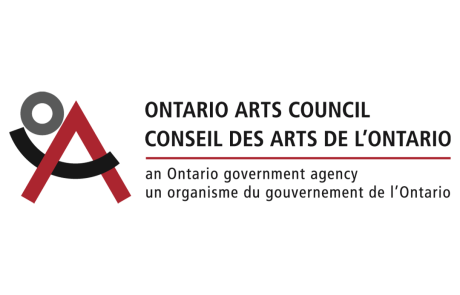The Discourse of Authenticity in Canadian Aboriginal Art (Chapter Two)
Excerpt From William Kingfisher’s Master Thesis
By William Kingfisher
The discourse of authenticity is embedded in the colonial relationship between Aboriginal people and Euro-Canadian society. This colonial relationship can be read as an ongoing attempt by Euro-Canadians to assimilate Aboriginal people into Euro-Canadian society. The Indian Acts of the late 1800s and early 1900s exemplify what the Report of the Royal Commission on Aboriginal Peoples (RCAP: 1996a; 1996b), written in 1996, states as ‘stage three’ in the relationship. Stage three is characterized as having the goals of displacement and assimilation of Aboriginal people – to transform Aboriginal people and their distinct cultures so they would conform to the expectations of what was considered the mainstream of Canadian society. The results of these ‘stage three’ interventions vis-a-vis Aboriginal communities were far-reaching, taking the form of relocations, the placement of youths in residential schools, the outlawing of Aboriginal cultural practices, and a variety of other interventionist measures. For Aboriginal people, the impact of these measures was profound and continues to affect their lives today. In implementing these interventions, there were few, if any, discussions with Aboriginal people by the Canadian government of the policies that affected every aspect of their life and culture. For instance, in the Indian Acts of 1876 and 1880 and the Indian Advancement Act of 1884: the federal government took for itself the power to mould, unilaterally, every aspect of life on reserves and to create whatever infrastructure it deemed necessary to achieve the desired end – assimilation through enfranchisement and, as a consequence, the eventual disappearance of Indians as distinct people (RCAP, 1996a:180). The intended result was that all Aboriginal persons would abandon their culture and their particular way of existing in the world to become ‘civilized’ and thus ‘lose themselves’ within the dominant Canadian society. Duncan Campbell Scott, the deputy superintendent general of Indian affairs during this period, exemplifies this position in the following statement to Parliament in 1920. Our object is to continue until there is not a single Indian in Canada that has not been absorbed into the body politic and there is not an Indian question (RCAP, 1996a:183). The interventions from the past continue to affect Aboriginal peoples today, and have had enormous consequences for Aboriginal culture, social, economic and political life. Across Canada Aboriginal people, in general, lead lives characterized by poverty, dependency, and occupy the lowest socio-economic rung in the larger Euro-Canadian society. For example, Aboriginal people as a whole consistently earn much less that non-Aboriginal peoples and have a greater reliance on social assistance that is higher than any other group in Canada where “over half of the total of Aboriginal population received social assistance or welfare payment since 1991” (Frideres and Gadacz, 2001:119). In terms of health and housing Aboriginal peoples consistently fall into the bottom of the scale (see RCAP,1996b). How were the various ‘stage three’ interventions justified? And why has the continuation of the marginalization of Aboriginal culture generally been accepted by the dominant Canadian society?
One important method employed by the dominant culture is the discursive practice of representing Aboriginal people as savages, noble-savages, child-like (in need of protection), vanishing, and as static (occupying a space in the past). There is a huge literature on this subject, for example: Berkhofer (1978), Stedman (1982), Clifton (1990), Torgovnick (1990), Hiller (1991), Churchill (1994, 1998), Weston (1996), Bataille (2001), and Huhndorf (2001) and in art, Blundell and Phillips (1983), Rubin (1984), Doxtator (1988), and Rushing (1995). These representations of Aboriginal people inform how the discourse of ‘authenticity’ has been constructed. An analysis of how concepts of authenticity are advanced reveals the ideology behind how, and where, Aboriginal art (and culture) is defined, and placed, in relation to the larger Euro-Canadian culture. For instance, in an article based on media responses to the Woodland school of art, Blundell and Phillips examine the perceptions of contemporary Aboriginal art by the media and how this is reflected in the activities of human history museums and art galleries. Blundell and Phillips point out how the authenticity argument for Aboriginal art is structured. They write that for Aboriginal art to be considered ‘authentic’ it has to be recognizably ‘tribal.’ If it is not, then the artist is thought to have been assimilated, rendering the art object ‘inauthentic.’ Blundell and Phillip state that: Many Euro-Canadians have equated ‘traditional’ culture with ‘Indian’ culture. This limited view of Indian cultural options draws support from a misunderstanding of Indian history. The only change through time for Indian cultures that many non-Indians can envision is progress toward a Euro-Canadian lifestyle. This viewpoint has important implications for the perception of contemporary Indian-produced art because it maintains that if Indian art is not recognizably ‘tribal,’ it cannot be considered authentic, and is instead the art of an assimilated person who has lost his or her sense of Indian identity (Blundell and Phillips, 1983:124). Embedded in the discourse of authenticity, the concept of primitivism is defined as a search for origins and it also affects how Aboriginal art is interpreted by subjecting it to the authority of authenticity. In recent times the discourse of authenticity continues to be an important issue in contemporary Aboriginal art, particularly how it prevents Aboriginal art from participating in contemporary life. Barry Ace, the former Chief Curator at the Indian Art Center at the Department of Indian and Northern Development, comments on the idea of primitivism and its effect on how Canadian Aboriginal art is interpreted. Like Blundell and Phillips, Ace makes the points that because of the primitive label, Aboriginal art is considered ‘unauthentic’ if there are signs of contemporary life in the work. Ace writes that: perhaps the most disturbing, yet challenging, barrier facing Indian artists today is posed by western art terms ‘primitive’ and ‘ethnic.’ (. . .) These terms have conveniently situated Indian artists into a stereotype that treats their art as something static and/or peripheral, or even worse, dismisses their art as ‘unauthentic’ for any noticeable signs of modernity (Ace, 1997:8). In these two quotes the discourse of authenticity in representations of Aboriginal art contributes to the ongoing marginalization of Aboriginal culture by constraining ‘authentic’ Aboriginal art to its ‘tribal’ or ‘ethnic’ roots. The ideology of this perspective is that ‘authentic’ Aboriginal culture is located somewhere in the past. An important implication of this discourse is that contemporary Aboriginal artists (and by extension, Aboriginal people) are silenced; they are not allowed to comment on or make reference to contemporary life, and if they do they and their art are deemed ‘inauthentic’ and/or assimilated.
Description of Two Exhibitions
In the following section I explore further how authenticity is discursively constructed in the writings and presentation of Canadian Aboriginal art in two Canadian exhibitions that included Aboriginal art. These exhibitions took place in 1927 and 1969. My goal is to analyze the ideological meanings of the exhibitions by answering the questions: What are the implications of locating Aboriginal art and culture in the past? How is this perspective played out in textual and visual codes?
The first exhibition that I examine is the 1927 Exhibition of Canadian West Coast Art: Native and Modern and the second is the Masterpieces of Indian and Eskimo Art from Canada, from 1969. In this analysis I describe how the Aboriginal art in the exhibitions is coded in terms of the discourse of authenticity.
In 1927 the National Gallery of Canada organized The Exhibition of Canadian West Coast Art: Native and Modern. This exhibition included both Aboriginal and non-Aboriginal artworks. The Aboriginal artworks were represented largely by the ‘decorative arts’ that adorned a variety of cultural artifacts – carved house poles, dug-out canoe, masks, headdresses, carved and painted chests, food boxes and trays, laddles and spoons, charms, amulets, Chilkat robes, carvings, costumes, drums and rattles. Also included in this exhibition were two paintings by Fredrick Alexee. The paintings are described in the catalogue as ‘primitive’ and Alexee as ‘an old Tsimsyan [sic] half-breed from Port Simpson.’ In the exhibition catalogue, Eric Brown, the director of the gallery, states: The purpose of the Trustees of the National Gallery in arranging this exhibition of West Coast Indian Art combined with the works of a number of Canadian artists who . . . have recorded their impressions of that region, is to mingle for the first time the work of the Canadian West Coast tribes with that of our more sophisticated artists in an endeavour to analyse their relationships to one another, if such exists, and particularly to enable this primitive and interesting art to take a definite place as one of the most valuable of Canada’s artistic productions (Brown, 1927:2, emphasis added). On the next page of the catalog, Brown states another objective for the exhibition, writing that, the disappearance of these arts under the penetration of trade and civilization is more regrettable than can be imagined and it is of the utmost importance that every possible effort be made to retain and revivify whatever remnants still exist into a permanent production, however limited in quantity (Brown, 1927:3, emphasis added). The second exhibition, The Masterpieces of Indian and Eskimo Art from Canada, from 1969, was the first major exhibition of Canadian Aboriginal art to be shown internationally. Although there were a number of well-known Aboriginal artists producing contemporary art at this time, this exhibition also focused exclusively on the ‘decorative arts’ that adorned a variety of cultural artifacts in Aboriginal culture across Canada. Some examples from the exhibition include: carvings of masks and animals in ivory, steatite and soapstone, Northwest Coast house poles and masks, a drum, decorated wooden chests, stone dishes, shield shaped ‘copper,’ clothing, and plumes. The Commissioner of the exhibition, Marcel Evrard, in his introduction, stated that: It is significant, however, that early contact with European culture did not lead, as was so often the case, to a rapid degeneration of the original art forms. First contacts were with traders rather than missionaries . . . and had an enriching effect. This created a situation where, for a century, an art maintained its particular characteristics intact, borrowing only new materials and tools to give it wider expression. It is proof of the vitality of the people, that in spite of intrusive influences as a result of contact, they remained uncorrupted (Evrard, 1969:n.p., emphasis added). Evrard continues with his discussion that: Few traces remain of the original art of the Indians of eastern Canada as contact with Europeans was well advanced by the middle of the seventeenth century. Iroquois masks represent the only survivals of indigenous wood sculpture. Wampum, on the other hand, is very rare. Most objects reveal European influence either in design or in the use of material (Evrard, 1969:n.p, emphasis added). Analysis of the Discourse of Authenticity
In the quotes by Blundell and Phillips and by Ace above regarding the importance of the discourse of authenticity in Aboriginal art emphasis is placed on confining Aboriginal art to tribal and ethnic recognition. Any sign of contemporary life in the work deems the work as ‘inauthentic’ or the artist as assimilated. The effect of this perspective is that it places ‘authentic’ Aboriginal art in the past and any comment on contemporary issues is effectively silenced.
In the following discussion I identify how this is played out and the myth of authenticity ‘naturalized’ in the two exhibitions. These points will also provide the terms for analysis where I discuss in the next chapter how contemporary Aboriginal artists have worked against this discourse. In this analysis I focus on two points from the discourse of the two exhibitions, the first being that Aboriginal cultures need to be ‘salvaged’ and the second related topic that there exists an ‘original’ or a ‘pure’ period in Aboriginal culture. Salvage and Redemptive Modes
In the Exhibition of Canadian West Coast Art: Native and Modern, Brown acknowledges that the goal for the exhibition is that, ‘every possible effort must be made to retain and revivify whatever remnants still exist.’ This perspective, called the ‘salvage mode’ is highly ideological. In this statement Brown is concerned with representing what he believes to be the last chance to capture in writing the ‘authenticity of changing cultures’ before it ‘disappears’ due to the domination of Western civilization.
The problem with this perspective is that in this discourse the implication is that there exists an authentic period and Aboriginal art that exhibits influence from contemporary life is inauthentic. Changes in the culture as reflected in the art due to outside influence are simply written off as not being authentic, thus silencing comment on contemporary cultural conflict or, in general, on contemporary life. Marcus and Fischer comment on this point: The current problem is that these motives [the salvage mode] no longer serve well enough to reflect the world in which ethnographers now work. All peoples are now at least known and charted, and Westernization is much too simple a notion of contemporary cultural change to support the motif of anthropology’s interest in other cultures as one of salvage (Marcus and Fisher, 1986:24). Another highly ideological perspective reflected in these two exhibitions that employs the perspective of a ‘pure’ period is the ‘redemptive’ mode. The redemptive mode represents an eternalized past-in-the-present (ethnographic present) and inscribes a particular culture as made up of static or dying remnants of a prior ‘authentic’ period. This perspective can be illustrated in Brown’s statement that the exhibition goal is to ‘revivify whatever remnants still remain’ and in the Masterpieces of Indian and Eskimo Art from Canada where Evrard states that, ‘few traces remain’ and that which has ‘survived’ represent the only ‘survivals.’ Marcus refers to this perspective as the ‘redemptive mode’ where the, ‘authentic’ aspects of a Culture, now existing only as remnants from a past, ‘pure’ period that preceded the Culture’s contact with the West (Marcus, 1986:165). The implication of this discourse is that authentic Aboriginal culture (and art) occupies a time period in the static past. In this discourse, the prior static past is privileged as an original time period and is conceived as being ‘pure.’ On the other hand, contemporary influence is thought of as a ‘contamination’ to the authentic, thereby rendering it ‘inauthentic.’ This suggests that Aboriginal cultures are not dynamic and cultural changes are ‘not allowed,’ thus rendering contemporary art produced at the time of the exhibitions as not ‘pure,’ or not ‘authentic.’ Original Period
The second point is that in the discourse of authenticity there is assumed to be a period in time where Aboriginal people made an ‘original’ art form. This can be demonstrated in the two exhibitions where the concept of ‘originality’ is placed in a dialectic relationship to ‘civilization.’ ‘Original’ Aboriginal art is described as ‘uncorrupted,’ or untainted from civilization and ‘original’ or ‘authentic’ Aboriginal art is disappearing, or ‘limited,’ because of Western civilization. In the Exhibition of Canadian West Coast Art: Native and Modern, Brown indicates this point in his reference that “the disappearance of these arts under the penetration of trade and civilization” to its disappearance due to trade and civilization.
In the Masterpieces of Indian and Eskimo Art from Canada exhibition, this concept of an ‘original’ Aboriginal art is being uncorrupted by Western influence continues. In the quotes by Evrard, he mentions twice that there was a time period that produced ‘original art.’ According to Evrard, in spite of the influence of ‘civilization, there still remains ‘traces’ and ‘survivals’ of this ‘original art’ as indicated in his comments: “an art maintained its particular characteristics intact,” and “in spite of intrusive influences as a result of contact, they remain uncorrupted.” This ideological perspective of an original, or pure, Aboriginal art contributes to the placement of Aboriginal culture into a time period (in this case, the past) that is different from contemporary life. Fabian (1983) comments on this strategy of identifying a culture in the past (for example, the use of the term primitive) as a ‘time-distancing device’ or temporalization. Fabian identifies these time-distancing devices as the ‘denial of coevalness’ that places the culture being discussed “in their time, not ours” and states that there are many kinds of expressions that “signal conceptualization of Time and temporal relations (such as sequence, duration, interval or period, origins, and development)” (Fabian, 1983:75). An example of a ‘time-distancing device,’ or the denial of coevalness, is demonstrated in Brown’s reference to kinship in the artworks. For example, Brown uses the terms, ‘West Coast Indian art,’ and ‘Canadian West Coast tribes.’ He also contrasts ‘Indian art’ with that of ‘Canadian artists’ and again, ‘West Coast tribes’ with that of ‘more sophisticated artists.’ Evrard writes of the ‘vitality of the people,’ and the ‘Indians of eastern Canada.’ The importance of this identification of kinship (rather than as individual artists) according to Fabian is that this: connotes ’primordial’ ties and origins, hence the special strength, persistence, and meaning attributed to this type of social relation. Views of kinship can easily serve to measure degrees of advancement or modernization (Fabian, 1983:75). How this ideology is worked through textual and visual codes can be demonstrated in the curators’ choice of exhibiting (almost exclusively) decorative and craft cultural items to represent Aboriginal art in these two exhibitions. In the Exhibition of Canadian West Coast Art: Native and Modern, Aboriginal art were exhibited in the same exhibition space as the ‘fine art’ paintings of the Euro-Canadian artists but the ‘time distance’ between the two is maintained. For example, Aboriginal art as fine art is downplayed in the description of Alexee as ‘primitive’ and ‘half-breed.’ The absence of ‘fine art’ is especially significant in the Masterpieces of Indian and Eskimo Art from Canada, since at this time there were a number of Aboriginal artists working professionally. Fabian discusses the importance for an ideological understanding of temporalization, stating that: Linguistically, temporalization refers to the various means a language has to express time relations. [. . .] Ideologically, temporalization has the effect of putting an object of discourse into a cosmological frame such that the temporal relation becomes central and topical (e.g. over and against spatial relations) (Fabian, 1983:74). Finally, placing temporal relations as a central concern is an important strategy by the dominant society for making conflict invisible from the public arena. Drawing on Fabian, Blundell comments on this point by stating that a focus on temporal relations: . . . serves to mask the true nature of conflict between Western nations and other people whom they have subordinated. The true nature of this conflict is the problematic simultaneity of different, conflicting, and contradictory forms of consciousness (Blundell, 2000:87). By focussing on temporal relations, the legacy of assimilation policies that have marginalized Aboriginal culture in respect to the dominant Euro-Canadian society is rendered invisible. What is not mentioned is the effect of relocations, residential schools, the outlawing of Aboriginal cultural practices and a variety of other interventionist measures that have lead to the appalling statistics of Aboriginal people living at the bottom of socio-economic status in Canadian society. How Aboriginal culture has had to creatively adjust and change to survive these interventions by the dominant society is simply written off as inauthentic.
 William Kingfisher is an independent curator, gardener, and member of the Gitigaan Project, an art organization that takes gardening and food as starting points for the exploration of decolonization methods, different ways of being in the world, understanding food production as politics, and to examine the interaction between the local and global concerns. He is a member of the Chippewas of Rama First Nation, Rama. He has worked as a researcher/curator at the Canadian Museum of Civilization (now Museum of History) (1998 – 2004) and at Trent University, Indigenous Studies Department, Nozhem First People Performance Space as an associate producer (2013). He has an MA in Anthropology from Carleton University (2004) where he wrote a thesis on contemporary Indigenous art in Canada. His recent project with the Art Gallery of Peterborough Arthur Shilling: The Final Works, is currently touring throughout southern Ontario.
William Kingfisher is an independent curator, gardener, and member of the Gitigaan Project, an art organization that takes gardening and food as starting points for the exploration of decolonization methods, different ways of being in the world, understanding food production as politics, and to examine the interaction between the local and global concerns. He is a member of the Chippewas of Rama First Nation, Rama. He has worked as a researcher/curator at the Canadian Museum of Civilization (now Museum of History) (1998 – 2004) and at Trent University, Indigenous Studies Department, Nozhem First People Performance Space as an associate producer (2013). He has an MA in Anthropology from Carleton University (2004) where he wrote a thesis on contemporary Indigenous art in Canada. His recent project with the Art Gallery of Peterborough Arthur Shilling: The Final Works, is currently touring throughout southern Ontario.










